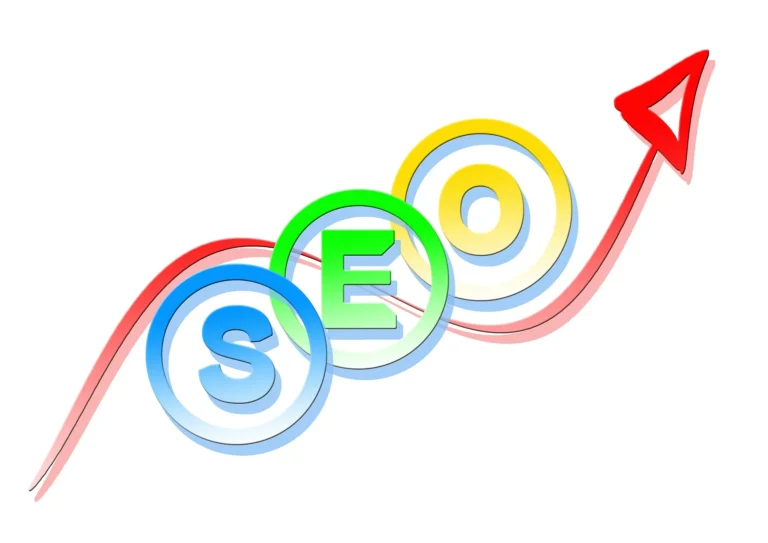Email Marketing Tips and Tricks for Success
Introduction to Email Marketing
Email marketing is a cornerstone of digital marketing strategies, a powerful tool that has stood the test of time and technological advancements. It’s a method of reaching your target audience through their inbox, delivering messages, offers, and information directly to those who have expressed an interest in your brand. By implementing effective email marketing tips and tricks, email marketing can be a game-changer for businesses of all sizes.
The Importance of Email Marketing in the Digital Marketing Landscape
Email marketing offers several distinct advantages in the digital age. It provides a direct line of communication with your audience, enabling you to engage with potential and existing customers on a more personal level. With the right strategies and tactics, it can deliver high return on investment (ROI).
Building Your Email List
One of the fundamental pillars of successful email marketing is having a robust and engaged subscriber list. The larger and more engaged your list, the greater the potential for success in your email campaigns. Here, we’ll explore strategies for growing your subscriber list and the critical importance of using ethical methods for list building.
Strategies for Growing Your Subscriber List
1. **Offer Valuable Content:** Encourage website visitors to subscribe by offering something valuable in return, such as exclusive content, discounts, or access to webinars and events.
2. **Optimized Signup Forms:** Place user-friendly signup forms prominently on your website, ensuring they are easy to find and complete.
3. **Social Media Promotion:** Promote your email list on your social media platforms to tap into your existing audience and attract potential subscribers.
4. **Referral Programs:** Encourage your current subscribers to refer friends, family, or colleagues by providing incentives for successful referrals.
The Importance of Using Ethical Methods for List Building
Ethics should always guide your approach to list building. It’s essential to build a list of subscribers who genuinely want to hear from you. Using ethical methods ensures that your emails reach an engaged audience who are more likely to open, read, and interact with your content.
Unethical practices like purchasing email lists or adding individuals without their consent can damage your reputation, lead to legal issues, and result in high unsubscribe rates. Building your list ethically fosters trust and goodwill among your subscribers, ultimately contributing to the success of your email marketing campaigns.

Segmentation
Segmentation is a powerful strategy in email marketing that allows you to tailor your messages to different groups within your email list. It’s the key to sending more targeted campaigns and achieving higher engagement rates. Here, we’ll discuss how to segment your email list effectively and the advantages of delivering personalized content.
How to Segment Your Email List for More Targeted Campaigns
1. **Demographics:** Consider segmenting your list based on demographics such as age, gender, location, and job title. Different demographics may have varying interests and needs.
2. **Purchase History:** Segment your list according to previous purchase behavior. This allows you to send product recommendations, related offers, and upsell opportunities to specific groups.
3. **Engagement Level:** Identify your most engaged subscribers and create targeted campaigns to keep them active and loyal. For less engaged subscribers, re-engagement campaigns may be more suitable.
Benefits of Personalized Content
1. **Higher Engagement:** Personalized content resonates better with recipients. When subscribers receive content that speaks to their interests and needs, they are more likely to open, read, and interact with your emails.
2. **Improved Conversion Rates:** Targeted and personalized campaigns lead to higher conversion rates. Whether it’s making a purchase, signing up for a webinar, or clicking through to your website, personalized content drives action.
3. **Enhanced Customer Loyalty:** Personalization shows your subscribers that you understand them. It fosters a sense of connection and loyalty, making them more likely to choose your products or services over competitors.
4. **Reduced Unsubscribes:** When your emails are relevant, subscribers are less likely to opt out. Reducing unsubscribe rates is crucial for the long-term health of your email list.

Effective Subject Lines
Your email’s subject line is the first thing recipients see, and it’s often the deciding factor in whether they open your email or send it straight to the trash. Crafting compelling subject lines is essential for email marketing success. In this section, we’ll explore tips for creating attention-grabbing subject lines and discuss their crucial role in determining email open rates.
Tips for Crafting Attention-Grabbing Subject Lines
1. **Keep It Short and Sweet:** Short subject lines are more likely to get to the point and pique curiosity. Aim for 50 characters or less for mobile optimization.
2. **Personalization:** Use the recipient’s name or other personalized elements when appropriate. Personalization can significantly increase open rates.
3. **Create a Sense of Urgency:** Incorporate phrases like “limited time offer” or “act now” to create a sense of urgency that motivates recipients to open the email promptly.
4. **Ask a Question:** Engage recipients by posing a question that resonates with their needs or desires. Questions pique curiosity and encourage opens.
The Role of Subject Lines in Email Open Rates
Email open rates are directly influenced by the subject line. An enticing subject line can significantly boost your open rate, while a lackluster one may result in your email going unnoticed.
1. **First Impression:** Your subject line is your email’s first impression. It’s what recipients see in their crowded inboxes. Make it count, as it’s the initial step in getting your content in front of your audience.
2. **Relevance and Expectations:** A well-crafted subject line sets expectations for the content within the email. If the subject line aligns with the recipient’s interests or needs, they’re more likely to open and engage with the email.
3. **Testing and Optimization:** Continuously test and optimize your subject lines. A/B testing different subject lines can help you identify which types resonate best with your audience.

Engaging Content
Once your email is opened, the content inside is what keeps your subscribers interested and engaged. In this section, we’ll delve into the art of creating valuable and relevant content for your email campaigns, and we’ll explore the power of storytelling and visuals in emails.
Creating Valuable and Relevant Content for Your Subscribers
1. **Know Your Audience:** Understand your subscribers’ preferences, interests, and pain points. Tailor your content to address their needs and provide real value.
2. **Consistency:** Consistency in your messaging, tone, and quality is key. Subscribers should know what to expect when they open your emails, building trust and loyalty over time.
3. **Educate and Inform:** Offer insights, tips, and valuable information. Position your emails as a source of knowledge and expertise in your industry.
The Use of Storytelling and Visuals in Emails
1. **Storytelling:** Incorporating storytelling in your emails can captivate readers and create a more personal connection. Share customer success stories, anecdotes, or the journey of your brand to make your emails relatable and engaging.
2. **Visual Content:** Visual elements like images, videos, infographics, and charts can make your emails more appealing and easier to consume. Use visuals to illustrate points, showcase products, or add aesthetic appeal to your emails.
3. **Interactive Elements:** Consider interactive elements like surveys, polls, and quizzes to engage your audience and gather valuable data on their preferences and interests.
4. **Call to Action (CTA):** Every email should have a clear and compelling CTA that guides the reader on the next step, whether it’s making a purchase, signing up for an event, or sharing content on social media.

Email Design
The design of your emails plays a pivotal role in capturing your subscribers’ attention and delivering your message effectively. In this section, we’ll explore best practices for email design and layout, along with the crucial aspect of mobile optimization for emails.
Best Practices for Email Design and Layout
1. **Simplicity:** Keep your email design clean and uncluttered. Too much complexity can overwhelm readers. Use a clear and concise layout that guides the recipient’s eye through the content.
2. **Branding:** Incorporate your brand elements, such as colors, logos, and fonts, to ensure consistency and build brand recognition.
3. **Readable Fonts:** Use web-safe fonts that are easy to read, and ensure font sizes are appropriate for both desktop and mobile users.
4. **Balanced Use of Images:** While visuals are essential, don’t overuse them. Include relevant images to enhance the content, but also consider users with image-blocking settings.
Mobile Optimization for Emails
1. **Responsive Design:** Ensure your emails are mobile-responsive, meaning they adapt to different screen sizes. This is critical, as a significant portion of recipients will view emails on mobile devices.
2. **Single Column Layout:** Design your emails with a single-column layout for better mobile readability. Avoid multi-column designs that may not display well on smaller screens.
3. **Touch-Friendly CTAs:** Buttons and links should be large enough to tap with ease on mobile devices. Make your calls to action (CTAs) touch-friendly for users on smartphones and tablets.
4. **Alt Text for Images:** Use descriptive alt text for images, as some mobile email clients may not display images by default. Alt text ensures that the message is conveyed, even without images.
5. **Testing:** Regularly test your emails on different mobile devices and email clients to ensure they display correctly and are user-friendly on various platforms.

A/B Testing
A/B testing is a valuable tool in your email marketing toolbox, allowing you to fine-tune your campaigns and achieve better results. In this section, we’ll discuss the importance of A/B testing in email marketing and explore what specific elements you should consider testing.
The Importance of A/B Testing in Email Marketing
A/B testing, also known as split testing, is the practice of comparing two versions of an email to determine which one performs better. It’s essential for several reasons:
1. **Optimizing Performance:** A/B testing helps you discover what resonates best with your audience, leading to improved open rates, click-through rates, and conversions.
2. **Data-Driven Decisions:** It allows you to make data-driven decisions rather than relying on guesswork. By testing and analyzing results, you can refine your email marketing strategy over time.
3. **Continuous Improvement:** Email marketing is not static. Trends change, and audience preferences evolve. A/B testing ensures you stay competitive and adaptable in the digital marketing landscape.
What Elements to Test in A/B Testing
1. **Subject Lines:** Test different subject lines to determine which ones attract more opens. You can experiment with length, personalization, and content to see what resonates best.
2. **Content:** Evaluate the impact of content variations. Test different headlines, body text, and images to discover what drives higher engagement and conversions.
3. **Call to Action (CTA):** A/B test your CTAs to optimize click-through rates. Try different wording, button colors, and placements to identify what drives action from your recipients.
4. **Send Times:** Test the best times and days to send your emails. The optimal send time can vary depending on your target audience, and A/B testing helps pinpoint the most effective timing.
5. **Layout and Design:** Experiment with the layout and design of your emails. Small changes in the visual presentation can have a significant impact on engagement.
6. **Segmentation:** You can also use A/B testing to determine the effectiveness of different segmentation strategies. Test whether specific segments respond better to certain content or offers.
7. **Landing Pages:** If your email leads to a landing page, test different versions of the landing page to ensure it’s optimized for conversions.

Call-to-Action (CTA)
The Call-to-Action (CTA) is the driving force behind your email campaigns. It’s the element that guides subscribers to take the desired action, whether it’s making a purchase, signing up, or downloading content. In this section, we’ll explore how to craft effective CTAs to maximize user engagement and discuss the essential aspects of CTA placement and design.
Crafting Effective CTAs to Drive User Engagement
1. **Clarity:** Your CTA should be crystal clear. Use action-oriented words like “Buy Now,” “Learn More,” or “Subscribe.” Avoid vague or passive language that might confuse the reader.
2. **Benefits:** Clearly communicate the benefits of clicking the CTA. Let subscribers know what’s in it for them and why they should take action.
3. **Urgency:** Create a sense of urgency to motivate quick action. Phrases like “Limited Time Offer” or “Act Now” can encourage users to click the CTA promptly.
4. **Design:** Make sure your CTA stands out visually. Use contrasting colors and bold, easily readable fonts to draw attention to it.
Placement and Design of CTAs
1. **Above the Fold:** Place at least one prominent CTA above the fold (the part of the email visible without scrolling). This ensures it’s immediately visible to readers when they open the email.
2. **In the Body:** Include additional CTAs within the body of the email, especially if the email is lengthy. These secondary CTAs can serve as reminders for those who have scrolled through the content.
3. **At the End:** Close your email with a final CTA. If recipients have read through the entire email, they might be more receptive to taking action by the time they reach the end.
4. **Button Design:** Use button-style CTAs that are visually distinct from the rest of the content. Ensure they look clickable and appealing. Button design should be consistent with your brand’s visual identity.
5. **Whitespace:** Surround the CTA with ample whitespace to make it stand out and prevent distractions from surrounding elements.
6. **Mobile Optimization:** Pay special attention to CTA placement on mobile devices. It should be easily tappable with enough space around it to prevent accidental clicks on adjacent links.
7. **Testing:** A/B test different CTA designs, placements, and wording to determine which combination results in the highest engagement and conversions.

Automation and Drip Campaigns
Automation and drip campaigns are powerful tools for efficiently delivering tailored content to your subscribers. In this section, we’ll explore how to set up automated email campaigns and delve into the critical aspects of nurturing leads and customer journey mapping.
How to Set Up Automated Email Campaigns
1. **Choose an Email Marketing Platform:** Start by selecting a robust email marketing platform that offers automation capabilities. Platforms like [Insert Platform Name] allow you to create and manage automated campaigns with ease.
2. **Define Your Goals:** Clearly define the objectives of your automated campaign. Whether it’s lead nurturing, onboarding, or post-purchase follow-up, a well-defined goal guides your automation strategy.
3. **Segment Your Audience:** Segment your email list to ensure your automation sequences are highly targeted. Segmentation allows you to deliver relevant content to specific groups of subscribers.
4. **Content Creation:** Develop the content for your automated emails, including the subject lines, body text, and CTAs. Ensure that the content aligns with the campaign’s objectives and your audience’s needs.
5. **Set Up Triggers:** Define the triggers that initiate your automated campaign. Triggers can include specific actions (e.g., signing up for a newsletter) or time-based triggers (e.g., sending a welcome email immediately after registration).
Nurturing Leads and Customer Journey Mapping
1. **Lead Nurturing:** Lead nurturing involves guiding leads through the sales funnel with a series of automated emails. Provide valuable content and solutions that address their pain points, gradually building trust and encouraging them to make a purchase.
2. **Customer Journey Mapping:** Customer journey mapping is the process of visualizing the path a customer takes from the first interaction with your brand to conversion and beyond. It helps you understand the customer’s experience and design automated campaigns that align with their journey.
3. **Content Relevance:** Map content to different stages of the customer journey. For example, introductory content may include educational materials, while late-stage content could focus on product details and incentives to convert.
4. **Drip Campaigns:** Drip campaigns are automated sequences of emails sent at specific intervals. They are ideal for lead nurturing. Create a series of emails that deliver value and encourage progress in the customer journey.
5. **Feedback Loops:** Integrate feedback mechanisms to gather information about customer preferences, pain points, and satisfaction. Use this data to refine your automated campaigns and provide better-tailored content.

Analytics and Metrics
Analytics are the compass guiding your email marketing strategy. Monitoring key metrics provides insights into the effectiveness of your campaigns and helps you refine your approach. In this section, we’ll explore the vital email marketing metrics to monitor and how to leverage analytics for strategy refinement.
Key Email Marketing Metrics to Monitor
1. **Open Rates:** Open rates indicate how many recipients have opened your email. It’s a key metric for measuring your email’s ability to capture attention. High open rates suggest compelling subject lines and relevant content.
2. **Click-Through Rates (CTR):** CTR measures the percentage of recipients who clicked on a link within your email. It’s an indicator of engagement and interest in your content, CTAs, and offers.
3. **Conversion Rates:** Conversion rates measure the percentage of recipients who took a desired action, such as making a purchase, signing up, or downloading content. High conversion rates indicate that your emails are effective in driving actions.
How to Use Analytics to Refine Your Email Marketing Strategy
1. **Segmentation Refinement:** Analyze metrics by audience segments. Identify which segments have higher engagement and conversion rates. Refine your segmentation strategy based on these insights.
2. **Content Optimization:** Review the performance of different types of content, subject lines, and CTAs. Use A/B testing and analytics data to fine-tune your content for better results.
3. **Send Time and Frequency:** Use analytics to determine the optimal send times and frequency. Experiment with sending emails at different times and days to find when your audience is most responsive.
4. **Inactive Subscriber Management:** Identify inactive subscribers and develop re-engagement campaigns to win them back or remove them from your list to improve overall engagement rates.
5. **Landing Page Analysis:** Track the conversion rates of the landing pages linked from your emails. Optimize these pages based on analytics data to improve the conversion funnel.
6. **Feedback and Surveys:** Incorporate feedback and surveys into your emails to collect data on customer preferences and satisfaction. Use this data to adapt your email marketing strategy.
7. **Competitor Analysis:** Compare your email marketing metrics with industry benchmarks and competitors. Analyzing how you stack up against others can highlight areas for improvement.

Compliance and Legal Considerations
Compliance with email marketing laws is not just a best practice; it’s a legal and ethical necessity. In this section, we’ll explore the importance of understanding and adhering to email marketing laws, including the CAN-SPAM Act and GDPR, and underscore the significance of including an unsubscribe option in your email campaigns.
Understanding and Adhering to Email Marketing Laws
1. **CAN-SPAM Act:** The CAN-SPAM Act is a U.S. law that sets rules for commercial email and gives recipients the right to stop receiving emails from businesses. Adhering to CAN-SPAM includes clear identification of your emails as advertisements, providing a legitimate physical postal address, and honoring opt-out requests promptly.
2. **GDPR (General Data Protection Regulation):** GDPR is a European regulation that governs data privacy. It applies to businesses worldwide if they process data of individuals in the European Union. Key provisions include obtaining explicit consent for email marketing, allowing users to access and delete their data, and notifying users of data breaches.
The Importance of Including an Unsubscribe Option
1. **Legal Requirement:** Including an unsubscribe option is a legal requirement under the CAN-SPAM Act and GDPR. Failing to provide this option can lead to severe penalties and legal consequences.
2. **Ethical Consideration:** Allowing recipients to opt out respects their right to control the emails they receive. It’s an ethical practice that builds trust with your audience.
3. **List Health:** Providing an unsubscribe option helps maintain a healthy email list. It allows you to remove unengaged or disinterested subscribers, improving the overall quality of your list and the accuracy of your metrics.
4. **Reputation Management:** Respecting unsubscribe requests is vital for reputation management. A good sender reputation is essential for email deliverability and ensuring that your emails reach the inbox, not the spam folder.
5. **User Experience:** A clear and accessible unsubscribe option enhances the user experience. It can help prevent frustration and complaints from subscribers who wish to opt out, which, in turn, can protect your brand’s image.

Avoiding Spam Filters
Ensuring that your emails reach the intended recipients’ inboxes is critical for the success of your email marketing campaigns. In this section, we’ll explore essential tips to avoid spam filters and discuss the profound impact of email deliverability on your campaigns.
Tips to Ensure Your Emails Land in the Inbox
1. **Permission-Based Marketing:** Obtain explicit consent from recipients before sending them emails. This practice not only aligns with legal requirements but also ensures that your emails are welcomed by engaged subscribers.
2. **Clean and Segmented Lists:** Regularly clean your email list to remove inactive or unengaged subscribers. Segment your list to deliver content that’s highly relevant to each group, increasing the chances of inbox placement.
3. **Consistent Sending Schedule:** Maintain a consistent sending schedule. Erratic or sudden spikes in email volume can trigger spam filters. Gradual increases in email frequency are less likely to be flagged as spam.
4. **Authenticate Your Domain:** Implement authentication protocols like SPF, DKIM, and DMARC to prove the legitimacy of your emails. Proper authentication helps in building trust with email service providers (ESPs).
5. **Avoid Spam Trigger Words:** Refrain from using spam trigger words and phrases in your subject lines and content. Words like “free,” “guarantee,” and excessive use of exclamation marks can lead to filtering.
The Impact of Email Deliverability on Your Campaigns
1. **Reaching Your Audience:** High email deliverability ensures that your messages actually reach your audience. If your emails consistently end up in the spam folder, your campaigns won’t achieve their intended goals.
2. **Open Rates and Engagement:** Emails that land in the inbox are more likely to be opened and engaged with. Good deliverability is closely tied to higher open rates and improved campaign performance.
3. **Sender Reputation:** Email deliverability plays a crucial role in shaping your sender reputation. A positive sender reputation enhances the chances of inbox placement, while a poor reputation can lead to spam folder placement or blocking by ISPs.
4. **Conversion Rates:** Higher email deliverability directly influences conversion rates. Emails that make it to the inbox have a better chance of persuading recipients to take desired actions, such as making a purchase or signing up.
5. **Brand Image:** Consistently ending up in the spam folder can damage your brand’s image. Subscribers may perceive your emails as unwanted or untrustworthy, harming your brand’s credibility.
6. **Cost Efficiency:** Good email deliverability ensures you get value for your email marketing investment. It minimizes the chances of emails going to waste and maximizes the return on your campaigns.

Tips for Nurturing and Retaining Subscribers
Subscriber retention is a vital aspect of email marketing success. In this section, we’ll explore strategies to keep subscribers engaged over time and highlight the critical role of educational and value-added content in nurturing and retaining your email audience.
Strategies to Keep Subscribers Engaged Over Time
1. **Consistent Communication:** Maintain a regular and consistent communication schedule with your subscribers. Whether it’s a weekly newsletter or a monthly update, predictability fosters engagement.
2. **Segmented Content:** Segment your email list to deliver content tailored to the specific interests and preferences of different subscriber groups. Personalization makes subscribers feel that your emails are relevant to them.
3. **Relevant Offers:** Continually offer relevant and enticing promotions or exclusive content to your subscribers. Value-added offers can incentivize continued engagement and purchases.
4. **Feedback Loop:** Encourage subscribers to provide feedback and preferences. Use this data to fine-tune your content and email marketing strategy according to their desires.
The Role of Educational and Value-Added Content
1. **Educational Content:** Provide content that educates your subscribers. Whether it’s how-to guides, tutorials, or industry insights, educational content positions your emails as a source of knowledge and expertise.
2. **Value-Added Content:** Go beyond mere promotions. Offer value-added content such as whitepapers, e-books, webinars, and exclusive access to resources. This not only keeps subscribers engaged but also demonstrates your commitment to their growth and success.
3. **Problem Solving:** Address common pain points or challenges your subscribers face. Offering solutions and tips can build trust and keep them coming back for valuable advice.
4. **Storytelling:** Share compelling stories that connect with your audience. Whether it’s success stories, case studies, or behind-the-scenes narratives, storytelling can create a personal bond with subscribers.
5. **Engagement Initiatives:** Encourage interactivity through surveys, polls, and quizzes. Interactive content not only engages subscribers but also provides valuable insights into their preferences.
6. **Continuous Learning:** Stay up to date with industry trends and evolving subscriber needs. Continuous learning ensures your content remains relevant and your subscribers remain engaged.

Testing and Optimization
Optimization is an ongoing process that can significantly enhance your email marketing performance. In this section, we’ll explore various techniques and strategies for continuously improving your email marketing campaigns.
A/B Testing:
A/B testing, or split testing, is a powerful method to refine your email campaigns. Test different elements, such as subject lines, content, CTAs, and visuals, to understand what resonates best with your audience. Over time, use the insights gained to optimize your emails for higher engagement and conversions.
Data Analysis:
Regularly analyze your email marketing data. Review open rates, click-through rates, conversion rates, and other relevant metrics. Identify trends and patterns to gain insights into subscriber behavior. Use data analysis to adjust your strategies and content accordingly.
Segmentation Refinement:
Refine your segmentation strategy based on performance data. Analyze which segments are more responsive and which ones need adjustment. Continuously adapt your email content to better match the interests and preferences of different subscriber groups.
Personalization:
Enhance personalization by using subscriber data effectively. Leverage information such as purchase history, browsing behavior, and demographics to deliver highly personalized content. Tailored emails are more likely to engage subscribers and drive conversions.
Email Design Optimization:
Regularly assess your email design and layout. Optimize for mobile devices, as a growing percentage of recipients open emails on smartphones. Ensure your emails are visually appealing, easy to read, and accessible to all subscribers.
Testing Send Times:
Experiment with different send times and days to find the optimal schedule for your audience. Test how email engagement varies during different times of the day and week. Use this data to refine your sending strategy.
Content Iteration:
Iterate on your email content. Keep it fresh and engaging. Avoid repeating the same messages or promotions too frequently. Continuously seek ways to provide value and offer new insights to subscribers.
Feedback Loops:
Encourage subscribers to provide feedback. Use surveys, polls, or direct feedback channels to understand their preferences and opinions. This information can guide your optimization efforts and help you better serve your audience.
Competitor Analysis:
Regularly analyze the email marketing strategies of your competitors and industry benchmarks. Learn from their successes and failures. Benchmarking against others can provide valuable insights into areas for improvement.
By implementing these testing and optimization strategies, you can fine-tune your email marketing campaigns, increase engagement, and achieve better results over time.

Future Trends and Innovations
Staying ahead of emerging trends is essential in the ever-evolving field of email marketing. In this section, we’ll discuss some of the most exciting and transformative trends in email marketing, including the rise of artificial intelligence (AI) and the power of interactive emails. We’ll also explore how to prepare for the future of email marketing.
AI-Powered Personalization:
AI is changing the game in email marketing. It allows for dynamic personalization on a granular level. Email campaigns can adapt in real-time based on user behavior, preferences, and historical interactions. AI can also assist in predictive analytics, helping you send the right content to the right people at the right time.
Interactive Emails:
Interactive emails are becoming more prevalent. They enable subscribers to engage directly within the email, whether by submitting forms, playing games, or even making purchases, without leaving the email client. Incorporating interactive elements can boost engagement and drive actions more effectively.
Automated Customer Journeys:
The future of email marketing lies in fully automated customer journeys. With the help of AI and marketing automation platforms, you can create complex, multistep campaigns that adapt to individual user journeys. These journeys can involve personalized content, follow-ups, and triggers that respond to specific actions or inaction by subscribers.
Data Privacy and Consent:
As data privacy regulations continue to evolve, it’s crucial to prioritize transparency and compliance. Gain explicit consent from subscribers and clearly communicate how their data will be used. Building trust by respecting privacy will be central to future email marketing success.
Mobile Optimization:
With the increasing use of mobile devices for email consumption, mobile optimization is no longer a choice but a necessity. Responsive design, mobile-friendly CTAs, and shorter, visually appealing content will be essential for effective email marketing in the future.
Preparing for the Future:
1. **Invest in AI Tools:** Explore and invest in AI-powered email marketing tools and platforms. AI can help you personalize content, optimize send times, and analyze data more efficiently.
2. **Interactive Email Development:** Learn how to create interactive emails or collaborate with designers and developers who can implement these features. Experiment with gamified and engaging email experiences.
3. **Customer Journey Mapping:** Invest in marketing automation and customer journey mapping to build automated campaigns that adapt to subscriber behavior. Personalize the entire customer journey from awareness to conversion and beyond.
4. **Stay Informed on Regulations:** Stay updated on data privacy regulations in your region and globally. Ensure your email marketing practices are compliant and ethical, and always obtain explicit consent from subscribers.
5. **Mobile-Centric Approach:** Prioritize mobile optimization and ensure that your emails are not only responsive but also designed with a mobile-first mindset to meet the changing habits of your audience.
By embracing these emerging trends and preparing for the future of email marketing, you can maintain a competitive edge and deliver more engaging and effective email campaigns to your subscribers.

Key Takeaways Of Email Marketing Tips and Tricks
In the dynamic world of digital marketing, email marketing remains a potent and essential tool for connecting with your audience. By following best practices and embracing emerging trends, you can harness the full potential of email marketing for your business. Here are the key takeaways:
1. **Understand the Fundamentals:** Start by understanding the fundamentals of email marketing, including list management, content creation, and legal compliance.
2. **Engagement is Key:** Prioritize engagement by delivering value, personalized content, and relevant offers to your subscribers.
3. **Testing and Optimization:** Continuously test and optimize your email campaigns for better results. A/B testing, data analysis, and audience segmentation are your allies in this journey.
4. **Compliance and Trust:** Adhere to email marketing laws and build trust with your subscribers. This includes including an unsubscribe option and respecting data privacy.
5. **Embrace the Future:** Prepare for the future of email marketing by adopting AI-powered personalization, interactive emails, and automated customer journeys. Stay informed about data privacy regulations and prioritize mobile optimization.
Now, it’s your turn to put these tips and tricks into action. As you craft your email marketing campaigns, remember that email marketing is a journey of continuous improvement. Keep your audience at the center of your strategy, test new ideas, and stay open to innovation. By doing so, you can create email campaigns that resonate, engage, and drive results. Your digital marketing success awaits!

Contact Dhubab – A Trusted Digital Marketing Agency with 15+ Years of Experience
Ready to supercharge your email marketing campaigns and achieve exceptional results? Dhubab, a Digital Marketing Agency with 15+ years experience, is here to help. Contact us today for expert guidance and tailored solutions to elevate your digital marketing strategies. We’re committed to helping your business excel in the digital landscape.
Don’t miss out on the opportunity to take your email marketing to the next level.
Reach out to Dhubab, your trusted partner for digital marketing success.







